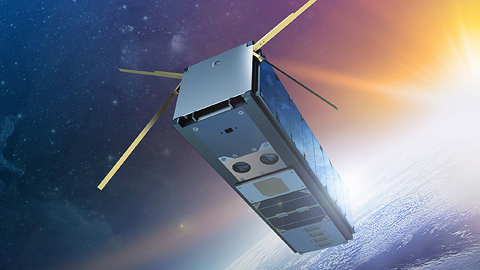Towards Sustainable Utilisation of Space
The research group of Professor Rami Vainio is developing novel particle instruments and innovative, radiation-tolerant solutions to nano-satellites such as Aalto-1. At the beginning of June, the research group of the University of Turku received an eight-year funding from the Academy of Finland as part of the Finnish Centre of Excellence in Research of Sustainable Space (FORESAIL) led by Professor Minna Palmroth (University of Helsinki).

The Aalto-1 nano-satellite that was launched on 23 June contains three different payloads, and one of them is the radiation monitor. Three of the radiation monitor's four main modules were built at the University of Turku and one at the University of Helsinki.
– We have created a radiation monitor that is much more cheaper, smaller, lighter, faster and energy-efficient than the ones that are currently in use, says Professor of Space Physics Rami Vainio from the University of Turku.
Space is a rising international trend and commercial nano-satellites are becoming increasingly common. However, many technical details are still open unknown in this re-invasion of space. The technology sent into space these days is often quite old and heavy. The unnecessary mass costs more to launch and remains as junk in orbit, unless satellites are brought back down after the mission is completed. At the moment, there is already over 5,000 metric tonnes of junk in the orbit.
The Academy of Finland recently made a decision on funding Centres of Excellence for the years 2018-2025. The Research of Sustainable Space consortium is one of the appointed CoEs and it brings together the top specialists in space science and technology in Finland.
The consortium led by Professor Minna Palmroth is aiming at sustainable utilisation of space. The consortium intends to revolutionise experimental space physics with nano-satellites and, at the same, it hopes to save the orbits from threatening space junk.
Radiation-tolerant Nano-satellites on the Rise
The new CoE is focusing on two key factors for the utilisation of space: radiation-tolerance for nano-satellites and containment of space debris The researchers study radiation conditions and develop intelligent technologies with software-based radiation protection using technologies developed for industrial safety and the Internet of Things.
– The old way to protect satellites from radiation in space is based on costly special components and the armouring of more delicate parts. We are developing an active but cost-effective way to protect from radiation, based on commercial components, says Professor Rami Vainio.
The First Collaboration within the Consortium Is Aalto-1
The CoE team has cooperated for a long time and participated e.g. in the Aalto-1 student satellite project. The Aalto-1 satellite was launched into orbit on Midsummer.
– Aalto-1 is mostly a student project, but it includes a radiation monitor built in Turku and a plasma-brake test by the Finnish Meteorological Institute. Minna Palmroth has participated in the planning of the satellite and has been part of the scientific team, says Professor Jaan Praks from Aalto University, leader of the Aalto-1 project.
The partners in the Centre of Excellence on sustainable space science and technology from the University of Helsinki are Assistant Professor Emilia Kilpua, who studies the data on radiation, and Minna Palmroth, who carries out computer modelling. From Aalto University, the group led by Jaan Praks focuses on building satellites and radiation protection, and from the University of Turku, Professor Rami Vainio’s group will study instrument development and new methods for protection. Research Director Pekka Janhunen’s group from the Finnish Meteorological Institute will study plasma-brakes and electric sails.
TK / MR
Photo: FORESAIL consortium